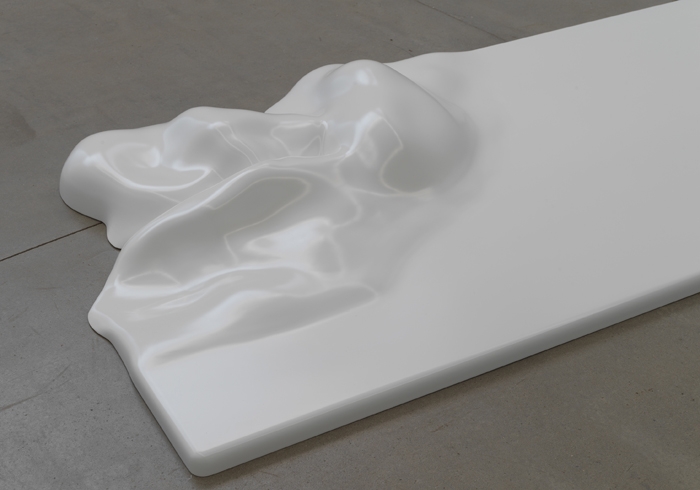For a number of years, artist-writer Tyler Coburn has practised a rigorous archaeology on communication, warfare and surveillance technologies, discovering obscure analogue prehistories that often intersect with the speculative realm of visual art. Surely this is an important endeavour in a time when Big Data, asymmetrical warfare and biometrics feel even more abstract the more widespread they become: who really grasps the information Google holds on us – or the spatial politics of drone bombing? But rather than summon the clarity of conventional media scholarship, Coburn presents these histories through a method of artistic defamiliarisation (following Russian literary theorist Viktor Shklovsky) where everyday technologies are made strange as they are read alongside theories of the body and of the psyche.
In Remote Viewer Coburn engages the parascience of telepathic visual communication. This practice received a significant boost in Western popular culture in 1930 when Mary Sinclair was presented as an exceptional medium by her husband and writer Upton Sinclair in his short book Mental Radio. Receiving a series of ‘mental broadcasts’ from kilometres away, Mary attempted to duplicate simple pencil drawings by hand, which she reported came to her ‘in fragments, as if I saw it being drawn by an invisible pencil’. Retrieving these drawings from archives, Coburn animates them in a video projected onto a dimly lit wall, where they appear as cryptic, illusionistic writings drawn in light (Remote Viewer (animation), 2018). The drawings’ abstract and spectral rendering of the contours of bodies and objects extends to a crinkled MDF object painted a polished white – made in collaboration with Bureau V and resembling a kind of bed linen – that quietly occupies the centre of the gallery floor (Remote Viewer (object), 2017). Along with a short contextualising text by Coburn, placed at the gallery’s front desk (Remote Viewer (takeaway), 2018), these items make up the entire presentation.
Of the 290 drawings by Sinclair, only 65 were considered successful copies of the originals, but this was enough to attract the attention of Albert Einstein (who authored a foreword to the German edition of the idiosyncratic study) and feed the growing cultural obsession with parapsychology, shared at the time by both the artistic avant-garde and the military (the former term, of course, is itself drawn from warfare). Automatism became a popular surrealist technique that sought knowledge not in the paranormal but in the unconscious, but shared by the two was the attempt to visually index the abstract or unknown. During the Cold War, the US military launched a secret intelligence unit to investigate the potential applications of extrasensory perception in military and domestic settings, partly in response to rumours that the Soviet Union was training ‘psychic spies’. Their remote viewing programme, building on Sinclair’s experiment, would not have been the first instance of weaponising the human psyche – in his text, Coburn traces a long history of psychics being deployed in warfare – yet it serves as a stark prefiguration of present-day drone technology, which allows for the visualisation of remote targets with increasing precision. As such, Coburn constructs a poetic and uncanny analogy between the interfaces of the mind, the body and the machine – three apparatuses whose workings have historically been understood as distinct – but one that ultimately is hardly legible in his formal presentation, even to the most initiated of audiences.
Tyler Coburn: Remote Viewer at Koenig & Clinton, New York, 20 April – 27 July 2018
From the Summer 2018 issue of ArtReview
